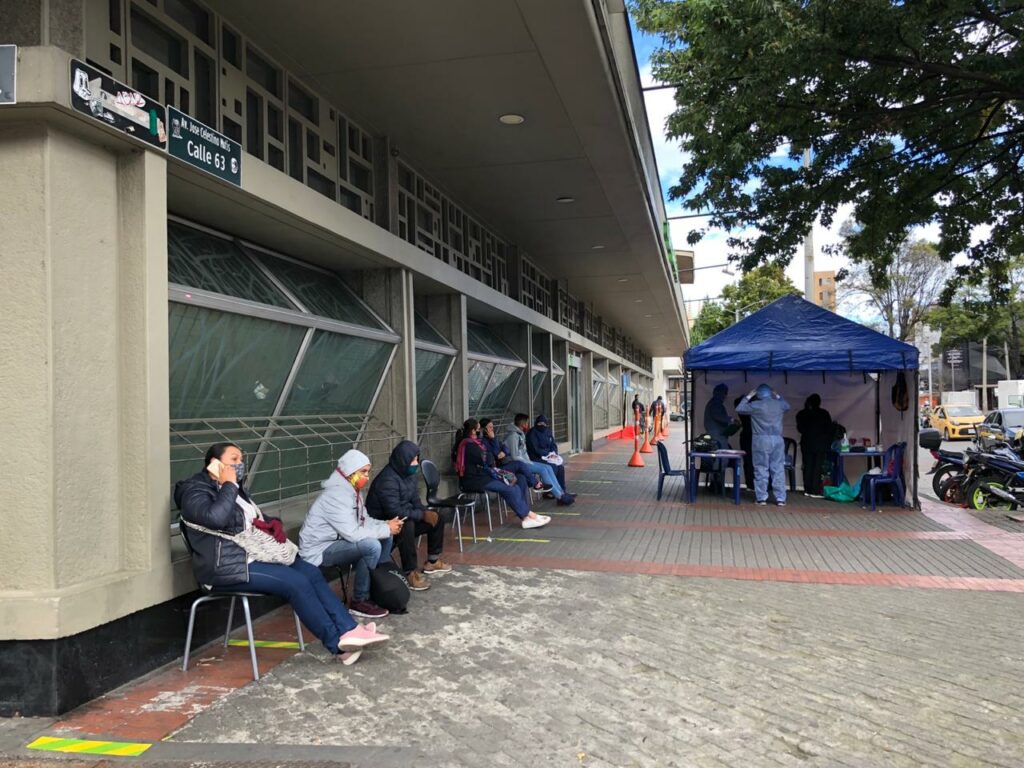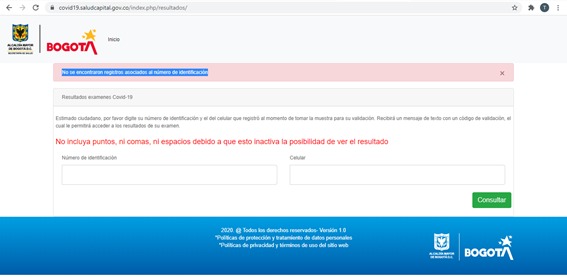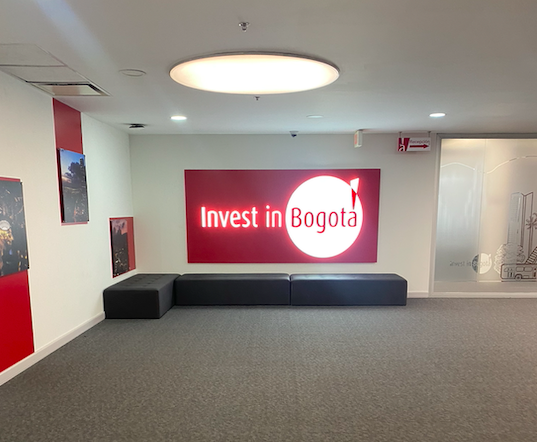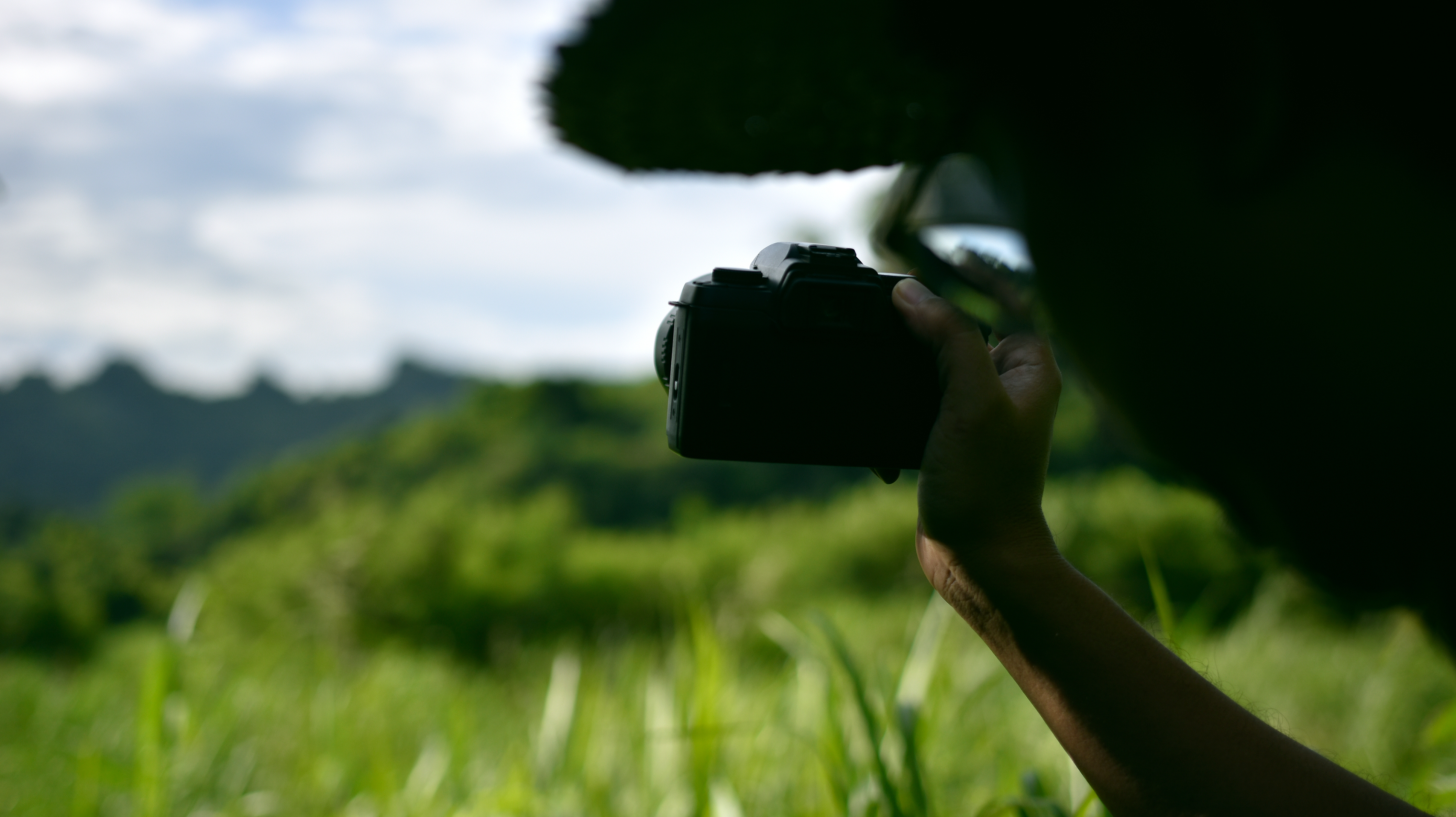As the number of coronavirus cases in Bogotá climbs towards its peak, more and more people are interested in getting tested. We find out how it works.

I live in Chapinero Alto, just near all the no-longer-visitable restaurants of the Zona G and firmly in the centre of a strict quarantine zone. Once derided as posh and upper-class by my Bohemian and salt-of-the-earth friends down in Teusaquillo, my fiancée and I now find ourselves unable to venture past Calle 100 to the apparently pristine gomelo fiefdom of Usaquén.
Read also: Latest information on how to get a coronavirus test in Bogotá
However, lepers that we may be for this fortnight in Chapinero, we do have access to free COVID-19 tests! Last week I decided to take full advantage of this dubious perk. Each day, the Chapinero local council tweets out a list of free testing facilities in the neighbourhood. You can see today’s list below:
Last week there were many more, including in the Carulla supermarket on calle 63 and barrio Juan XXIII’s salon comunal, both within walking distance for me. On Wednesday I popped down to Carulla at around 8.15 am, only to discover a line stretching halfway to Usme and then some. So I hiked up into Juan XXIII and joined the hillside line in about 90th place. I stood in line for the best part of two hours, advanced about two metres in that time (I’m genuinely not sure whether they had actually started testing anyone by then) and then gave up and slunk back home in time for work. No dice.
The next day I decided to get up a bit earlier to see if I could beat the foot traffic. I headed off to Carulla again, this time at about 7.45 am, a good 45 minutes before testing was due to start. This time there were even more people in the line! I raced back up the mountain to Juan XXIII and this time managed to nab 44th spot in the line. Two hours later, I was outside the testing room, being interviewed by a little woman in astronaut gear. She filled out a form with all my personal details, asked me if I’d had any symptoms (for those asymptomatics worried about wasting their time in the line, only to be turned away at the end, this did not seem to be a prerequisite for the test), then gave me the form and sent me to wait by the door. Ten minutes later I was inside, being interviewed by yet another person with a form. I was given both forms back to hand to the nurse/doctor administering the test, who instructed me to sit down and keep my mask down.
Read our latest coverage on the coronavirus in Colombia
The test is pretty straightforward and takes about 15 seconds. You slip the mask down past your nose, the tester slides a cotton bud up a nostril, keeps going until it’s slightly uncomfortable, twists and removes. Done. It’s definitely uncomfortable, but based on what certain friends have told me, there are far less pleasant tests involving cotton buds out there. The person administering my test informed me that in seven days (yes, you read that right) I would be able to jump on the Min Salud website and check my test results. I was also told I would be phoned if I had tested positive.
So here we are, a week after my test and still no phone call yet. I mistakenly thought yesterday was seven days after the test and attempted to access my results on the Min Salud website. I was unsuccessful. Not because I had only waited six days, but because there seems to be no link whatsoever to test results on the Min Salud website. After a quick google, I found the right page and put in my details, only to be told that there was no record of me on file.

Let’s put that down to my getting the days of the week wrong and try one more time.
Here’s the link for those playing at home: https://covid19.saludcapital.gov.co/index.php/resultados
Cédula in… phone number in… ‘No se encontraron registros asociados al número de identificación’.
Ah well.
If you want to get tested, either call your healthcare provider or 123





